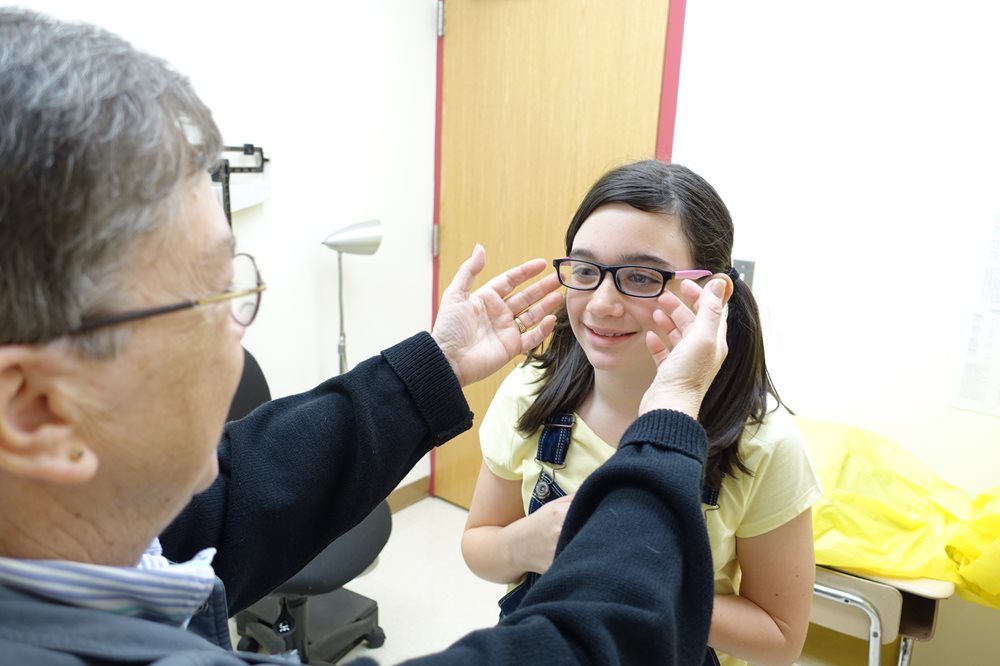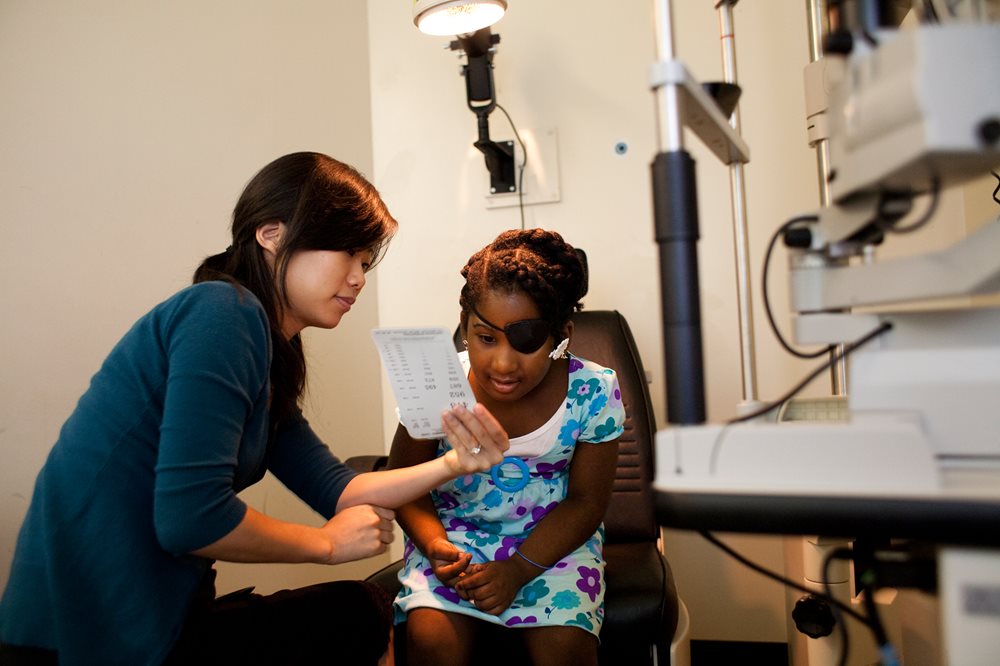Back to School Eye Check Exam
 August is Children’s Eye Health and Safety Month—a great time for you to have your child’s eyes checked before school – virtual or in-person - starts.
August is Children’s Eye Health and Safety Month—a great time for you to have your child’s eyes checked before school – virtual or in-person - starts.
According to studies, approximately 80 percent of preschoolers do not receive vision screenings. Your child’s eyes and vision should be examined beginning at six months of age, then again at age three and yearly while they are in school. If a child’s vision problem is left untreated, it could result in permanent vision loss or even blindness.
Some common childhood eye problems that can be detected include nearsightedness, farsightedness and astigmatism as well as the following diseases:
- Amblyopia (lazy eye): Amblyopia, also known as lazy eye, is decreased vision that results from abnormal visual development in infancy and early childhood and is the leading cause of decreased vision among children. This condition develops when nerve pathways between the brain and the eye aren’t properly stimulated. As a result, the brain favors one eye, usually due to poor vision in the other eye causing the brain to ignore signals from the other eye. Possible treatments include eye patches, eye drops, and glasses/contacts, or in some cases surgical intervention.
 Strabismus (crossed eyes): Strabismus, or crossed eyes, is a condition in which the eyes do not line up properly. Indications your child may have this disorder could be their eyes looking in different directions, with each eye focusing on a different object. Strabismus is very common, affecting four percent of children age six and younger. This eye condition tends to run in families and may be corrected with eyeglasses and/or surgery.
Strabismus (crossed eyes): Strabismus, or crossed eyes, is a condition in which the eyes do not line up properly. Indications your child may have this disorder could be their eyes looking in different directions, with each eye focusing on a different object. Strabismus is very common, affecting four percent of children age six and younger. This eye condition tends to run in families and may be corrected with eyeglasses and/or surgery. - Ptosis (drooping of the eyelid): Ptosis, or eyelid drooping, in infants and children is when the upper eyelid is lower than it should be. This may occur in one or both eyes. Ptosis in children is often due to a problem with the muscle that raises the eyelid. A nerve problem in the eyelid can also cause it to droop. Eyelid lift surgery can repair drooping upper eyelids.
- Color deficiency (color blindness): People with color blindness aren’t aware of differences among colors that are obvious to the rest of us. People who don’t have the more severe types of color blindness may not even be aware of their condition unless they’re tested. The main symptom of color blindness in children is difficulty in distinguishing colors or making mistakes when identifying colors.
Protecting your children’s eyes from injury is another important aspect of eye health. You can protect your child’s eyes by taking the proper precautions.

- Protective eyewear should be worn while participating in sports or recreational activities.
- Sunglasses should be worn when outside that have 99 or 100% UVA and UVB protection.
- Ensure toys are age-appropriate (watch for sharp or protruding parts).
- When watching a screen such as a phone, TV or computer, for a long period of time, follow the 20/20/20 rule - every 20 minutes look about 20 feet away for 20 seconds.
We all know that accidents happen. If your child injures their eye, it is important to follow these steps:
- Do not allow the child to rub or touch his or her eye.
- Do not apply any kind of medication to the eye.
- Do not attempt to remove any debris from the eye on your own.
- If a chemical got into your child’s eye, flush the eye with water.
A medical professional should assess all eye injuries; therefore, seek medical attention immediately.
If your child happens to injure his eye, contact your optometrist or other medical doctor to examine the eye as soon as possible. The Eye Institute offers emergency ocular care services in addition to pediatric specialists.
For more information or to schedule an appointment with one of TEI’s pediatric optometrists call 215.276.6111.